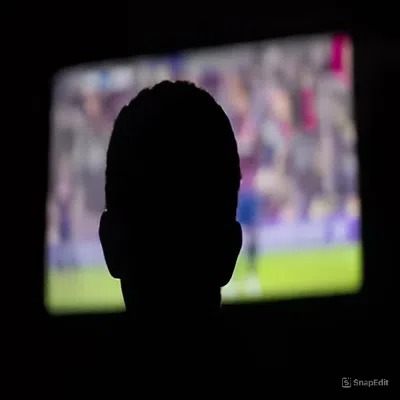
Photo by Rushay Booysen/EyeEm via Getty Images
when Horror Yearbook – It started as whispers. People spoke of “plasma gangs” — groups of men supposedly hunting for human organs, draining blood to sell to hospitals, or stealing plasma televisions as a cover for something darker. In a country where crime stories spread faster than facts, the idea of plasma gangs quickly became a national obsession.
South Africans know fear intimately. With one of the world’s highest crime rates, daily anxiety weaves into life’s rhythm. A knock on the door, a car slowing down too long — small moments can send a jolt of dread. The legend of the plasma gangs tapped into that unease, turning crime into myth. It didn’t matter that evidence was scarce; what mattered was how believable it felt in a society already on edge.
The myth soon spread through WhatsApp groups, Facebook posts, and local radio chatter. People shared grainy videos and shaky voice notes as proof. Communities began to warn one another, locking doors earlier, scanning the streets for white vans. What began as fear turned into folklore — a chilling reflection of modern South Africa’s emotional state.
Urban legends don’t appear from nowhere. They grow from fear, mistrust, and moments when people feel powerless. The plasma gangs myth was never just about criminals — it was about society’s silent panic.
In many South African townships, residents face crime daily but see little justice. Police resources are stretched thin, and trust in institutions runs low. When reality feels out of control, stories fill the gap. People retell myths because it makes chaos easier to understand. It’s simpler to imagine an organized gang than to face the terrifying randomness of crime.
Sociologists describe this as “narrative survival” — the way communities use storytelling to process trauma. The plasma gang story became a metaphor for everything wrong with the system: corruption, inequality, and the constant feeling of danger.
And while the idea of blood-harvesting criminals sounds extreme, it carries a strange logic. South Africa’s deep economic divide — where luxury estates sit beside struggling neighborhoods — creates fertile ground for suspicion. People know others are suffering, and they also know desperation drives terrible acts. The legend became a moral warning: a reminder of how far society could fall when inequality festers.
An investigation by BBC News once noted that such myths often rise when truth and trust collapse together. In South Africa, both have been eroding for years.
Social media didn’t just spread the plasma gangs myth — it gave it life. Platforms like Facebook and WhatsApp became echo chambers for fear, amplifying rumors until they sounded like facts. A friend of a friend claimed to know someone who was attacked. A viral video of a street fight got labeled as “plasma gang caught in action.”
The more the story spread, the more real it felt. For many, sharing warnings was an act of care — a way to protect family and friends. But that same instinct made the story grow beyond control. Even local authorities struggled to stop it. When police issued statements debunking the claims, few believed them. The myth had already taken root in something deeper than reason — emotion.
Ironically, this wave of paranoia also united people. Neighbors formed watch groups, stayed alert, and looked out for each other. Fear, in a strange twist, became community glue. While it stemmed from panic, it also revealed an enduring truth: South Africans still believe in protecting one another.
Over time, though, the frenzy faded. News outlets began publishing fact-checks, and the evidence of plasma gangs disappeared into rumor. Yet, the myth remains part of urban folklore — whispered again whenever fear rises.
“Urban legends reflect what society worries about most,” said a cultural researcher from The Guardian. “Plasma gangs weren’t real criminals. They were symbols of real fear.”
Every country has its modern monsters. Some live in shadows; others live online. For South Africa, the plasma gangs myth revealed how fear, when mixed with imagination, can shape reality itself.
But the story isn’t just about panic — it’s about resilience. It shows how people cling to stories when they feel unseen, and how myths can become mirrors for a nation’s heart. When communities tell tales of danger, they’re really asking for safety, dignity, and connection.
In a way, the plasma gangs legend reminds us that the truth behind every myth is deeply human. Beneath the horror lies a simple wish — to feel safe again. And maybe that’s what South Africa’s cities and townships need most: not just more security, but more trust, more empathy, and more stories of hope.
For more explorations of South African myths and modern storytelling, visit Culture Insight Africa.
Other Information :